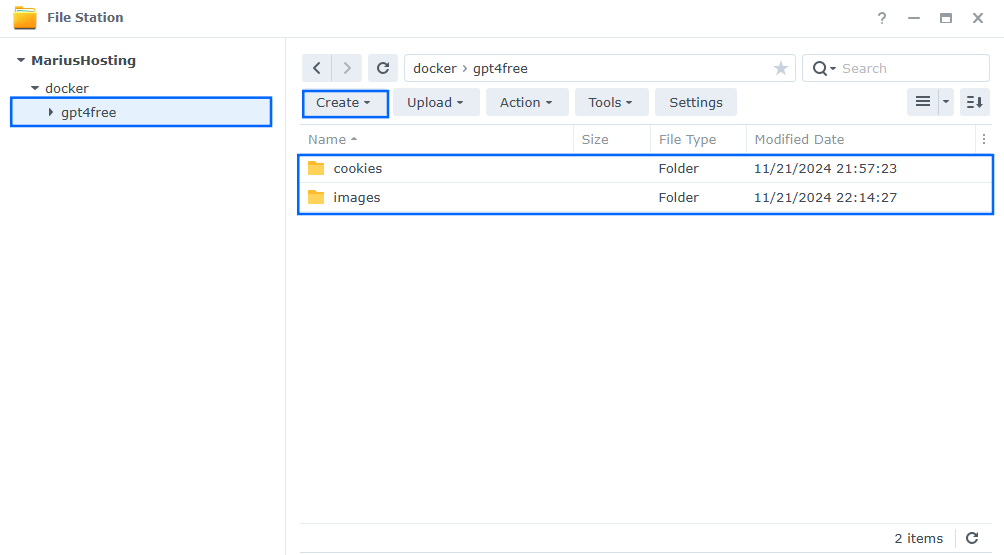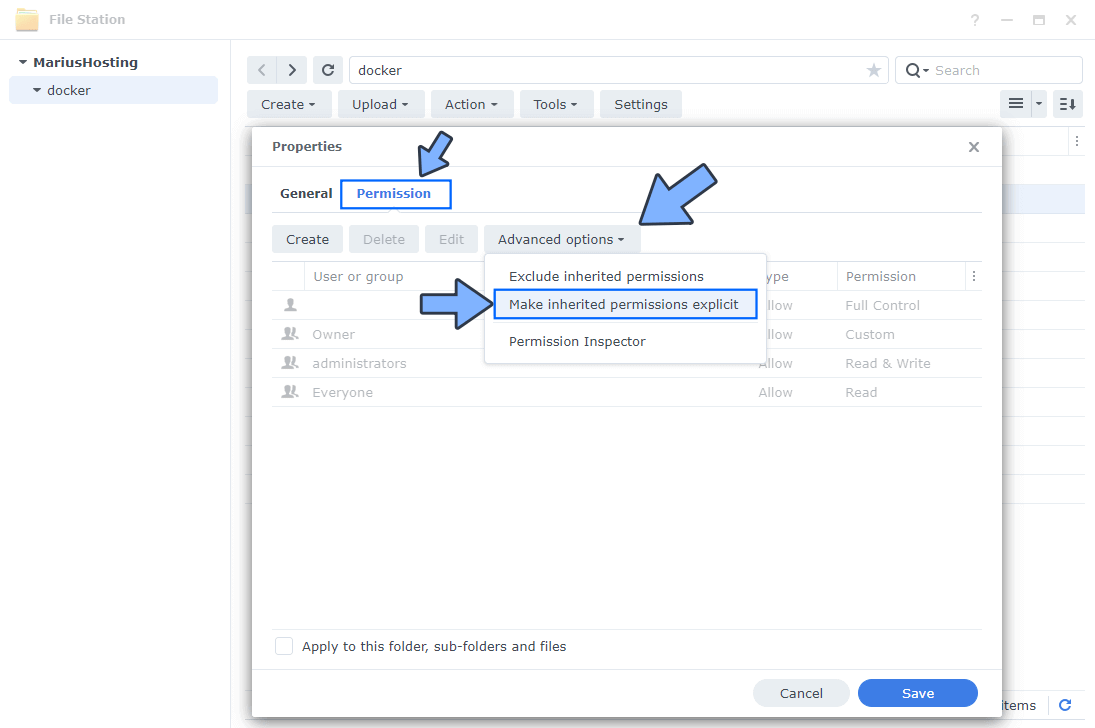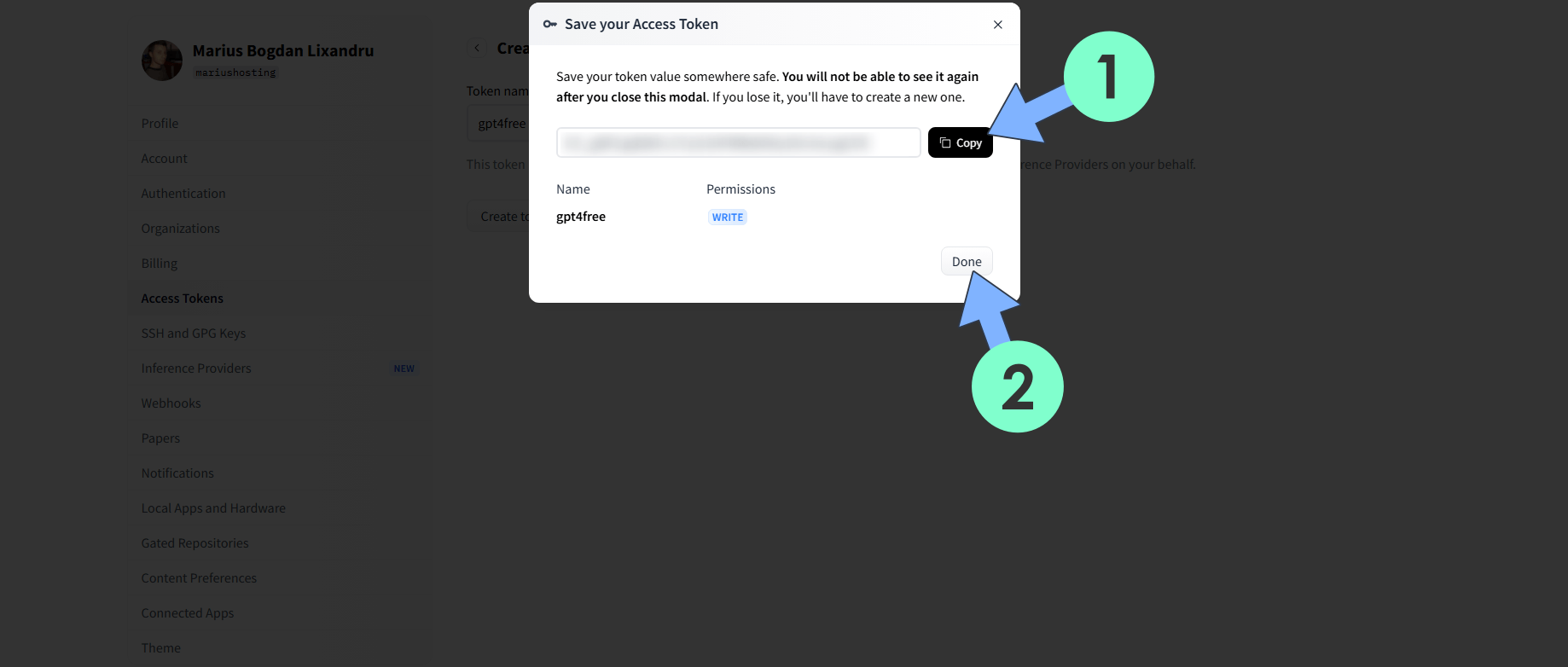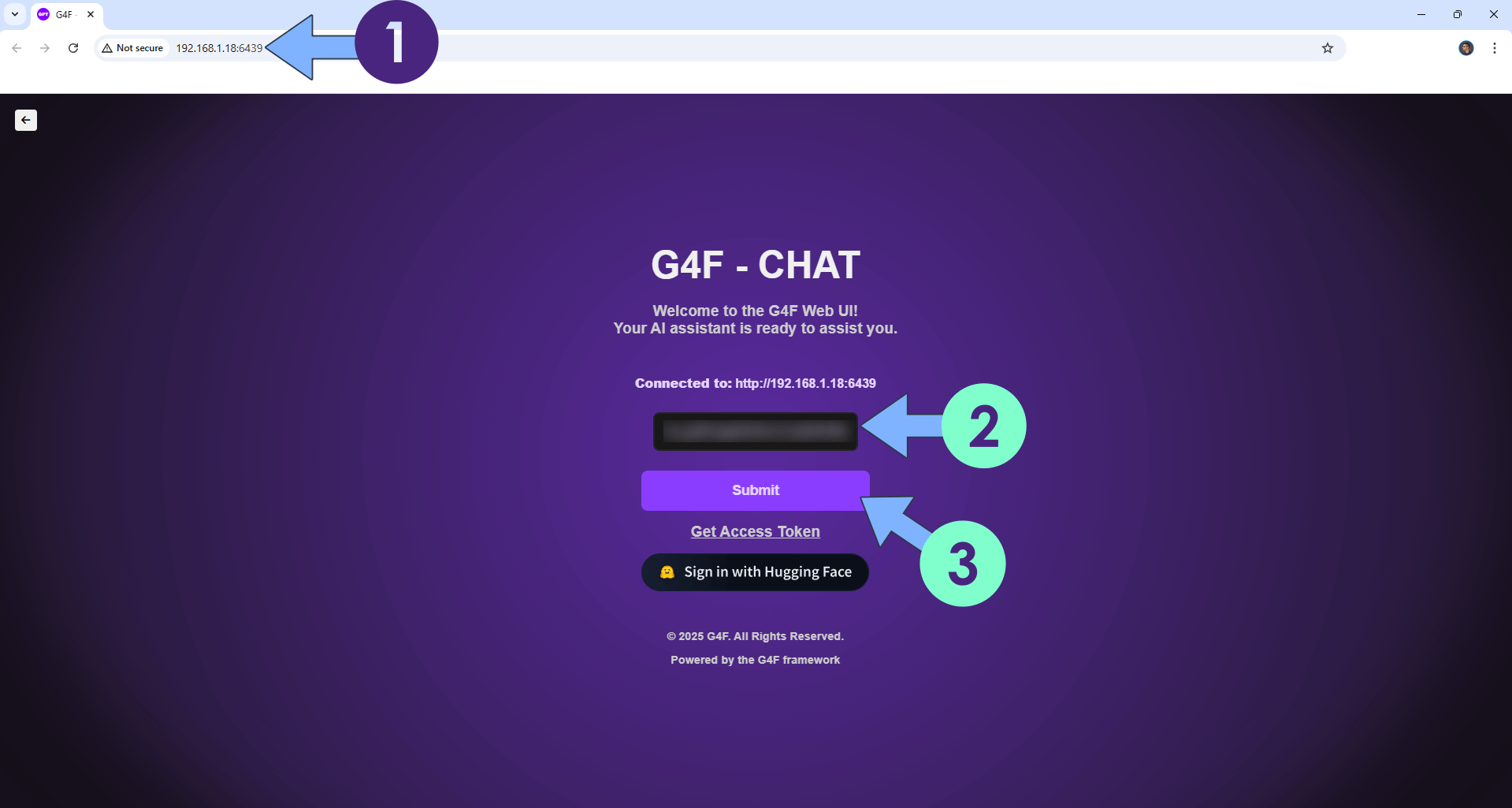
GPT4FREE is an app initiative that aims to provide educational access to advanced language models. The focus is on providing the community with tools and resources to leverage the power of AI for various use cases, such as content creation, research, and automation, in a manner that is easily accessible. You can use it for educational purposes. The essence of GPT4FREE lies in its mission to make sophisticated AI tools universally available, promoting innovation and education across diverse fields. In this step by step guide I will show you how to install GPT4FREE on your Synology NAS using Docker and Portainer.
This guide works perfectly with the latest GPT4FREE v6.8.3 release.
STEP 1
Please Support My work by Making a Donation.
STEP 2
Install Portainer using my step by step guide. If you already have Portainer installed on your Synology NAS, skip this STEP. Attention: Make sure you have installed the latest Portainer version.
STEP 3
Go to File Station and open the docker folder. Inside the docker folder, create one new folder and name it gpt4free. Follow the instructions in the image below.
Note: Be careful to enter only lowercase, not uppercase letters.

STEP 4
Go to File Station and open the docker folder. Inside the gpt4free folder, create two folders and name them cookies and images. Follow the instructions in the image below.
Note: Be careful to enter only lowercase, not uppercase letters.

STEP 5
Right click on the gpt4free folder that you have previously created at STEP 3 then click Properties. Follow the instructions in the image below.

STEP 6
Go to the Permission tab, then click Advanced options. From the drop-down menu, choose “Make inherited permissions explicit“. Follow the instructions in the image below.

STEP 7
Select Everyone then click the Edit tab. Follow the instructions in the image below.

STEP 8
Check all Read and Write Permissions. Click Done. Follow the instructions in the image below.

STEP 9
After you click Done on STEP 8, check “Apply to this folder, sub-folders and files“. Click Save. Follow the instructions in the image below.

STEP 10
Log into Portainer using your username and password. On the left sidebar in Portainer, click on Home then Live connect. Follow the instructions in the image below.

On the left sidebar in Portainer, click on Stacks then + Add stack. Follow the instructions in the image below.

STEP 11
In the Name field type in gpt4free. Follow the instructions in the image below.
services:
gpt4free:
image: hlohaus789/g4f:latest
container_name: GPT4FREE
shm_size: 4g
healthcheck:
test: timeout 10s bash -c ':> /dev/tcp/127.0.0.1/8080' || exit 1
interval: 10s
timeout: 5s
retries: 3
start_period: 90s
volumes:
- /volume1/docker/gpt4free/cookies:/app/har_and_cookies:rw
- /volume1/docker/gpt4free/images:/app/generated_images:rw
ports:
- 6439:8080
- 1330:1337
- 7281:7900
restart: on-failure:5

STEP 12
Scroll down on the page until you see a button named Deploy the stack. Click on it. Follow the instructions in the image below. The installation process can take up to a few minutes. It will depend on your Internet speed connection.

STEP 13
If everything goes right, you will see the following message at the top right of your screen: “Success Stack successfully deployed“.

STEP 14
Launch your browser, then go to the official Hugging Face website by clicking on the blue link below. Register a Hugging Face account.
STEP 15
Once you have registered your own Hugging Face account, go to the left sidebar, then click Access Tokens then Create new token. Follow the instructions in the image below.

STEP 16
Click the Write tab, give a name to the token, then click Create token. Follow the instructions in the image below.

STEP 17
Copy and save your Access Token to a safe place because you will need it later at STEP 19. Click Done. Follow the instructions in the image below.

STEP 18
🟢Please Support My work by Making a Donation. Almost 99,9% of the people that install something using my guides forget to support my work, or just ignore STEP 1. I’ve been very honest about this aspect of my work since the beginning: I don’t run any ADS, I don’t require subscriptions, paid or otherwise, I don’t collect IPs, emails, and I don’t have any referral links from Amazon or other merchants. I also don’t have any POP-UPs or COOKIES. I have repeatedly been told over the years how much I have contributed to the community. It’s something I love doing and have been honest about my passion since the beginning. But I also Need The Community to Support me Back to be able to continue doing this work.
STEP 19
The installation process can take up to a few seconds/minutes. It will depend on your Internet speed connection. Now open your browser and type in http://Synology-ip-address:6439 Type in your own Access Token that you have previously saved at STEP 17, then click Submit. Follow the instructions in the image below.

Enjoy GPT4FREE!
If you encounter issues by using this container, make sure to check out the Common Docker issues article.
Note: If you want to run the GPT4FREE container over HTTPS, check How to Run Docker Containers Over HTTPS. In order to make GPT4FREE work via HTTPS, it’s mandatory to activate WebSocket. ⚠️Warning: I do not recommend running GPT4FREE via Reverse Proxy. This product should be used only on localhost. Why don’t I recommend running it via Reverse Proxy? Because if someone were to know your HTTPS address, then they can use your own API keys for free and charge you if you have a paid plan.
Note: Can I run Docker on my Synology NAS? See the supported models.
Note: How to Back Up Docker Containers on your Synology NAS.
Note: Find out how to update the GPT4FREE container with the latest image.
Note: How to Free Disk Space on Your NAS if You Run Docker.
Note: How to Schedule Start & Stop For Docker Containers.
Note: How to Activate Email Notifications.
Note: How to Add Access Control Profile on Your NAS.
Note: How to Change Docker Containers Restart Policy.
Note: How to Use Docker Containers With VPN.
Note: Convert Docker Run Into Docker Compose.
Note: How to Clean Docker.
Note: How to Clean Docker Automatically.
Note: Best Practices When Using Docker and DDNS.
Note: Some Docker Containers Need WebSocket.
Note: Find out the Best NAS Models For Docker.
Note: Activate Gmail SMTP For Docker Containers.
This post was updated on Wednesday / January 7th, 2026 at 10:14 PM
